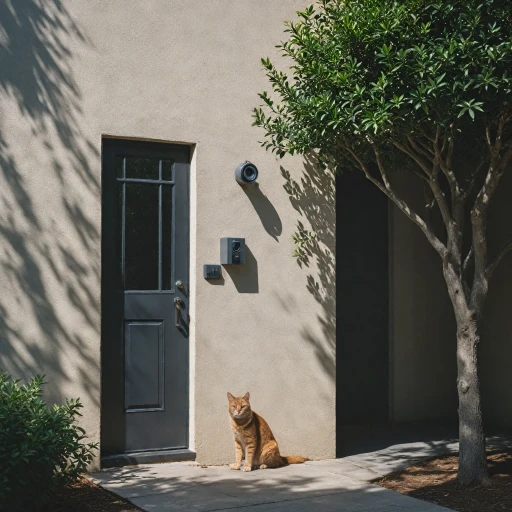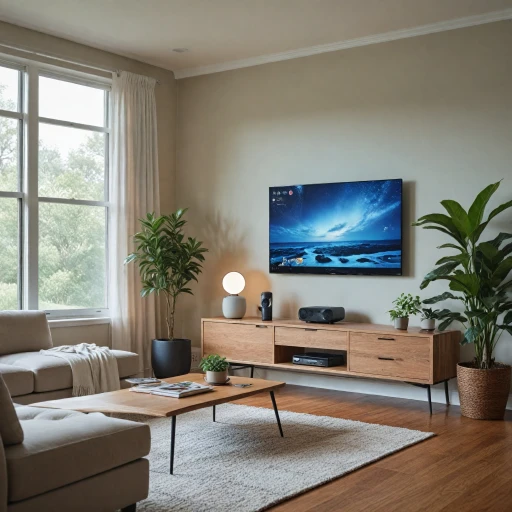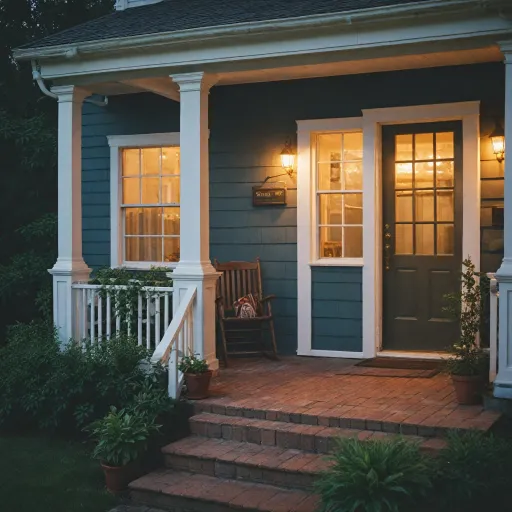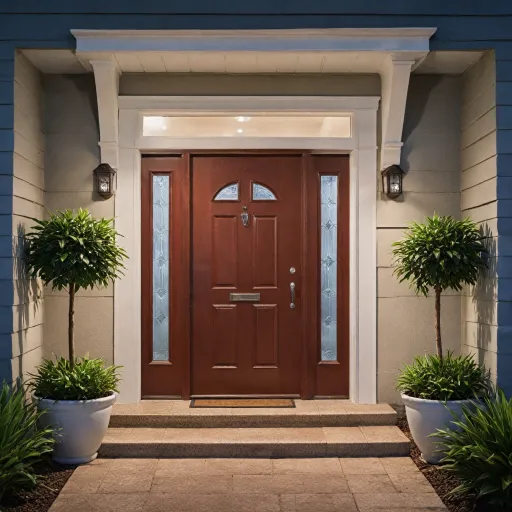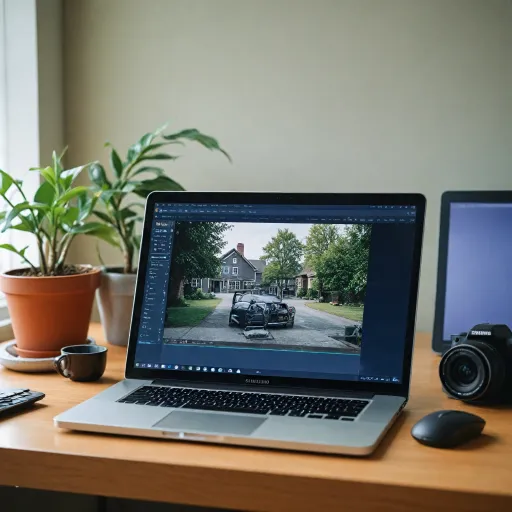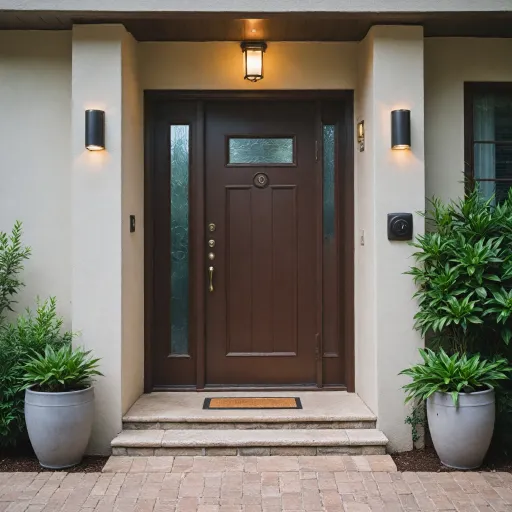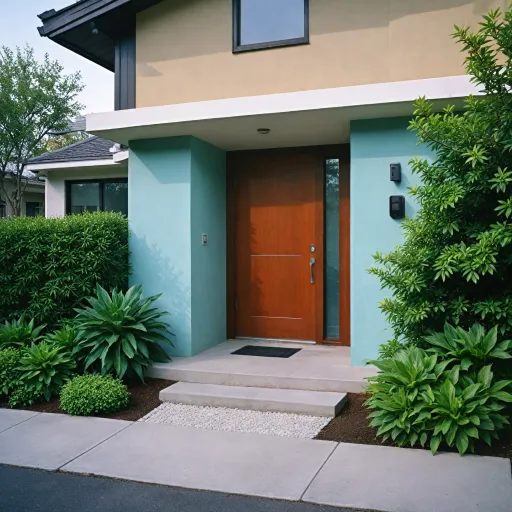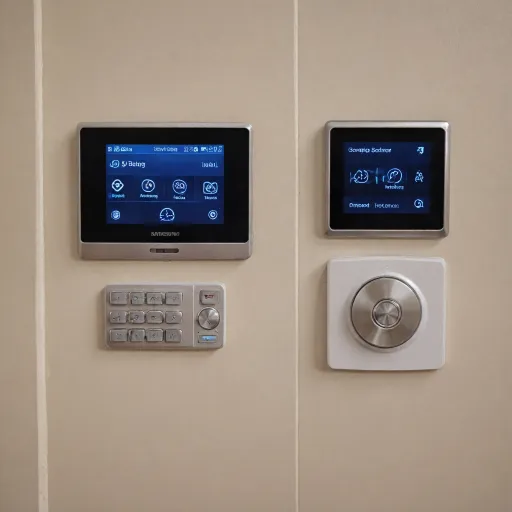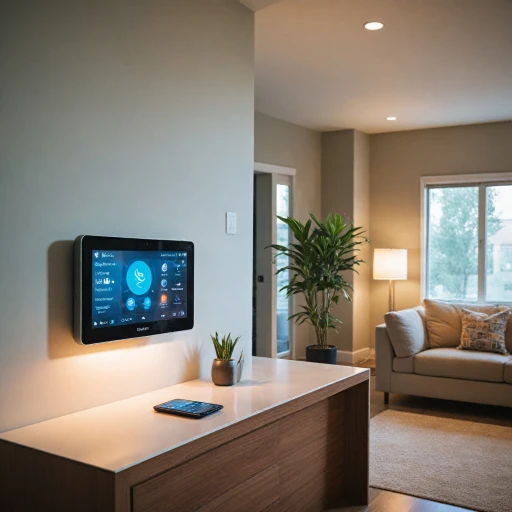
How Vivint's Glass Break Sensor Works
Functionality Behind the Detection
Vivint's Glass Break Sensor is an integral part of a comprehensive security system, designed to recognize the unique sound frequency of glass shattering. When the sensor detects such sounds, it immediately triggers an alert, ensuring rapid response to potential break-ins, whether through a key door or window.
The glass break sensor primarily utilizes acoustic detection technology, analyzing sound patterns from its environment. This technology enables the sensor to differentiate between false alarms, like a dropped glass dish, and genuine security threats, making it a vital smart security feature.
Its integration with other smart devices, such as security cameras and motion detectors, boosts the security system’s ability to provide comprehensive safeguards both indoors and outdoors. For homes equipped with security cameras, the moment a glass break is detected, the cameras can be activated to record any suspicious activity, offering both real-time monitoring and evidence collection.
Moreover, the sensor's compatibility with other devices in a smart security ecosystem allows seamless operation, such as triggering alarms and notifying the security provider for swift intervention. This interconnected approach enhances situational awareness and overall security efficiency.
Vivint’s advanced technology ensures reliability in detection while minimizing battery drain, making it a considerate choice for anyone investing in robust home security. Its effectiveness in accurately identifying glass-breaking incidents makes it a preferred option compared to other sensor types like motion detectors, which can sometimes miss such events.
For a comprehensive understanding of glass break detectors within the context of smart security systems, learn more about integration with motion detectors. This integration illustrates the synergy achieved by combining advanced technologies to enhance home safety effectively.
Integrating Glass Break Sensors with Security Cameras
Integration with Security Systems for Comprehensive Protection
Integrating Vivint's glass break sensors with security cameras provides a layered approach to safeguarding your home. This comprehensive system ensures that all potential security breaches are covered. Glass break sensors work as a detector for any specific sounds of glass breaking, and when integrated with cameras, they offer enhanced monitoring capabilities.
Modern smart security systems, like those offered by Vivint smart technology, allow seamless communication between various devices such as motion detectors, security cameras, and even outdoor sensors. This coordination guarantees each component enhances the other, leading to a robust line of defense.
When a break detector picks up the sound of glass breaking, the cameras immediately start recording, capturing key visuals that can be crucial for verification and subsequent actions. Additionally, these systems can be linked to contact sensors on doors and windows to further bolster the security.
With advancements in smart technology, the integration of these systems has become more streamlined. They are typically powered by batteries, ensuring uninterrupted service even during power outages. It is essential to keep your security features, such as the glass detectors and cameras, well maintained for optimal performance.
For those considering the practical aspects of this integration, it's useful to explore guidelines on how to safely manage and adjust these components as needed. With proper setup and understanding of how they work together, your home security system will offer a sense of safety and peace of mind, making it a worthwhile investment.
Installation and Setup Tips
Installing and Setting Up Your Glass Break Sensor
Understanding how to effectively set up your Vivint glass break sensor is crucial for maximizing your home security system's potential. A seamless installation ensures that the sensor accurately detects potential threats like a break-in or an accidental glass break, optimizing your security measures. First things first, selecting the right location is key. The glass break sensor should be installed in rooms where there are large glass areas, such as windows or sliding glass doors. Ideally, these sensors should be placed within a 15 to 20 feet range from the glass they monitor. This placement ensures the sensor effectively detects the sound frequency from a typical glass break. When installing your sensor, consider the following tips:- Ensure the location allows for unobstructed connection with your smart home system. This can enhance the interaction between your glass break sensor and other devices such as security cameras or motion detectors.
- Test the sensor immediately after installation by following Vivint's instructions or using a glass break simulator app. This confirms the sensor is working as expected and you have peace of mind knowing your home is protected.
- Regularly check the sensor's battery and keep spare ones on hand. A functional battery is critical for continuous protection.
Comparing Glass Break Sensors to Other Security Measures
Analyzing the Efficacy of Glass Break Sensors Compared to Other Security Solutions
When it comes to safeguarding your home, a variety of security measures can be employed. Glass break sensors, such as those offered by Vivint, play a critical role, but how do they hold up against other options?- Coverage and Versatility: Glass break sensors are specifically designed to detect the sound frequency of breaking glass, making them highly effective for windows and glass doors. Unlike basic motion detectors, they don't rely on visible movement, which can be an advantage in certain settings.
- Integration with Security Cameras: As discussed earlier, integrating these sensors with security cameras augments their functionality. Security cameras provide visual verification when a glass break sensor is triggered, ensuring an accurate response to potential threats.
- Outdoor Use: While primarily used indoors, the strategic placement of glass break sensors near entrances can enhance protection. For outdoor areas, pairing them with sturdy outdoor cameras can improve overall security coverage.
- Battery Efficiency: Some break detectors, like Vivint's, boast long-lasting battery life, providing peace of mind without frequent maintenance. In contrast, more traditional security measures might require regular updates and additional energy sources.
- False Alarm Rates: When assessed against other security systems, glass break sensors often have a lower rate of false alarms. This is due to their capability to differentiate between normal household noises and the specific sound of breaking glass.
Common Concerns and Troubleshooting
Addressing Common Concerns and Troubleshooting Issues
Homeowners who are keen on maximizing their home security naturally have questions and concerns about installing and operating Vivint's glass break sensor. Here, we aim to address some of the common issues that might arise, ensuring that your experience is as seamless as possible. False AlarmsOne of the initial concerns that users might encounter is the potential for false alarms. Glass break sensors can sometimes mistake other loud noises for the sound of a breaking glass. This could lead to unwarranted alerts, disrupting your peace of mind. To mitigate this issue, ensure that the sensor's sensitivity is appropriately configured during installation, considering suggestions from your security provider for optimal settings. Battery Life and Replacement
Another frequent query is about the sensor's battery life. Vivint's sensors are designed to be energy-efficient, commonly lasting up to two to three years on a single battery. It's important to regularly check this and replace the battery as needed to maintain effective protection. Failing to do so could lead to malfunction, leaving your home vulnerable. Interference with Other Devices
In environments bustling with smart devices like motion detectors and security cameras, there's a chance of interference causing functional faults. To counteract this, proper placement and the avoidance of overlapping frequencies during installation are critical. Contact Malfunctions
Occasionally, users may face issues with the sensor's connectivity, particularly in larger homes where signals need to travel further. To ensure a steady connection, consider enhancing your system with additional contact points or a network extender to maintain communication between your sensors and the main control panel. By understanding these common concerns, you can better navigate potential challenges and make the most out of integrating smart glass break sensors into your security system. This proactive approach not only safeguards your home but also gives you greater confidence in your security setup.
Enhancing Home Security with Smart Technology
Smart Innovations for a Safer Home
With the integration of Vivint's glass break sensor alongside other smart technology, like security cameras and motion detectors, homeowners can significantly enhance their security measures. The combination of these devices creates a comprehensive security network, ensuring that every potential entry point is monitored. As burglars evolve their methods, so does home security technology. Smart innovations continue to make homes safer with cutting-edge features that provide real-time alerts and data analytics.
Key Features of Smart Technology
Smart home systems, such as those offered by Vivint, incorporate features that extend beyond basic monitoring. These include:
- Seamless Integration: The ability to sync glass break sensors, smart cameras, and motion detectors through a single interface makes managing security efficient and user-friendly.
- Remote Monitoring: Using apps from providers like Vivint, homeowners can monitor their property remotely, ensuring peace of mind even when away.
- Intelligent Alerts: Get notified of any suspicious activity immediately through push notifications or email alerts.
- Data Storage: High-capacity storage options allow for reviews of past footage, crucial for any incidents that may need further investigation.
- Energy Efficiency: With innovations like battery-powered sensors and cameras, smart systems not only secure but also save energy.
Enhanced Safety and Peace of Mind
By utilizing technologically advanced products like glass break detectors alongside traditional security measures such as key and door locks, the robustness of home security is enhanced. Further, the ability to integrate outdoor cameras ensures full property surveillance. The reliability of these innovative solutions is demonstrated by positive reviews on platforms like Amazon, affirming the effectiveness and trustworthiness of such technologies.


